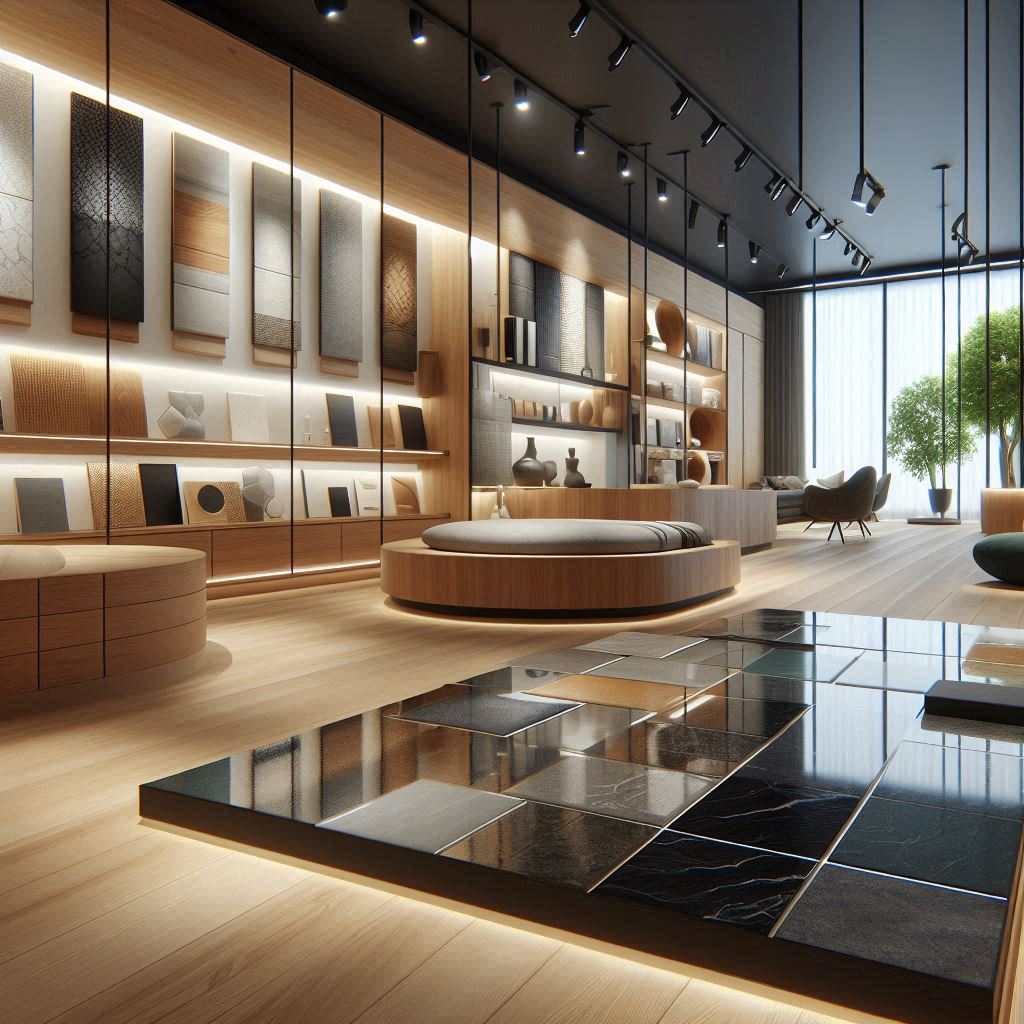Luxury Vinyl Plank vs Ceramic Tile: Which Flooring Option Reigns Supreme?
When it comes to flooring options, the debate between luxury vinyl plank and ceramic tile has been heating up like a sun-baked sidewalk. Both materials have their own unique characteristics, advantages, and challenges, making the choice feel as complex as selecting a favorite child. In this article, we will explore the key differences, pros and cons, installation methods, suitability for high-moisture areas, and maintenance needs of these two popular flooring materials. So, let’s dive in and see which flooring option truly reigns supreme!
What are the key differences between luxury vinyl flooring and ceramic tile?
Understanding the material composition of vinyl and ceramic
To grasp the essence of these flooring options, we must first look at their material composition. Luxury vinyl flooring (LVF), often mistaken for its less fashionable cousin, laminate, is crafted from several layers of synthetic materials, including a durable wear layer that protects against scratches and stains. This layer is what allows luxury vinyl plank to mimic the appearance of natural hardwood or tile, giving your home that high-end feel without the hefty price tag. On the other hand, ceramic tile is a classic choice, made from clay and minerals, baked at high temperatures to create a sturdy surface. Its cousins, porcelain tiles, boast even greater durability, making them popular in high-traffic areas. The fundamental difference between vinyl and ceramic lies in their composition; one is a synthetic marvel, while the other is a timeless natural product.
Comparison of durability between luxury vinyl and ceramic tile
When it comes to durability, both flooring options bring their A-game, but they do so in different ways. Luxury vinyl flooring is often heralded for its resilience against dents and scratches, making it a fantastic choice for families with kids and pets. With a wear layer designed to withstand everyday wear and tear, luxury vinyl plank can hold its own against the rigors of daily life. However, ceramic tile isn't a slouch either; its hard surface is resistant to moisture, making it an excellent choice for kitchens and bathrooms. So, in the durability showdown, luxury vinyl flooring may edge out ceramic tile in terms of impact resistance, while ceramic shines in moisture-prone areas, creating a delightful balance.
Cost analysis: Is luxury vinyl or ceramic tile more affordable?
Ah, the age-old question: how much will it cost me to live my interior design dreams? When comparing the costs of luxury vinyl and ceramic tile, the answer can vary significantly based on type, brand, and installation method. Generally speaking, luxury vinyl plank is more budget-friendly, averaging around $2 to $5 per square foot, while ceramic tiles can range from $1 to $20 per square foot, depending on the design and quality. Additionally, the installation costs can tip the scales; while luxury vinyl flooring is predominantly DIY-friendly, ceramic tile often requires professional installation due to its complexity. So, if you’re looking for a cost-effective flooring option that won’t break the bank, luxury vinyl might just be your best friend.
What are the pros and cons of luxury vinyl plank and ceramic tile?
Advantages of luxury vinyl flooring over ceramic tile
Luxury vinyl flooring brings a plethora of advantages to the table, making it a popular choice among homeowners. For starters, its ability to mimic the look of hardwood or tile without the hefty price tag is a game-changer. Plus, luxury vinyl is often softer underfoot, providing a more comfortable walking experience—perfect for those who love to lounge around in their socks. It’s also incredibly versatile, available in various styles and colors that cater to different tastes. Additionally, vinyl flooring is easy to install, with options for floating floor or glue-down installation, making it a DIY dream. When you factor in its moisture resistance and ease of maintenance, it’s no wonder homeowners are singing the praises of luxury vinyl flooring.
Disadvantages of ceramic tile compared to luxury vinyl
While ceramic tile has its merits, it does come with some drawbacks when compared to luxury vinyl. First and foremost, the cold and hard surface of ceramic can be a shock to the system, especially in winter months, unless you invest in underfloor heating. Additionally, the installation process can be labor-intensive and often requires professional expertise, leading to higher costs. If you're clumsy, you may find that ceramic tiles are prone to chipping, especially if you drop something heavy. Lastly, while ceramic’s durability is commendable, it can be unforgiving; once a tile is cracked, the only solution is to replace it, which can be a hassle. So, while ceramic tiles have their place in the flooring world, they may not always be the most practical option for every homeowner.
Real-world user experiences with vinyl and tile flooring
User experiences can provide valuable insight into the practicalities of luxury vinyl and ceramic tile. Many users rave about the comfort and warmth of luxury vinyl, especially in homes with children and pets. They appreciate how easily it cleans up spills and the fact that it doesn’t feel like walking on a glacier during the winter months. On the flip side, ceramic tile enthusiasts often extol its beauty and timelessness, with many commenting on how it elevates the aesthetic of their homes. However, several ceramic tile users express frustration over the difficulties of cleaning grout lines and the pain of dropped items leading to unsightly chips. Ultimately, real-world experiences reveal that both luxury vinyl and ceramic tile can deliver satisfying results, provided you choose the right option for your lifestyle.
How does the installation process differ for luxury vinyl and ceramic tiles?
Is luxury vinyl flooring easy to install as a floating floor?
One of the standout features of luxury vinyl flooring is its user-friendly installation process. Many luxury vinyl planks are designed as floating floors, meaning they can be installed over existing floors without the need for glue or nails. With snap-together technology, even those with two left feet when it comes to DIY can install luxury vinyl flooring with relative ease. It’s a process that can often be completed in a single weekend, leaving you with more time to sip coffee and admire your handiwork. The ease of installation is a major perk, especially for those looking to save on professional installation costs.
Professional installation requirements for ceramic tile
In contrast, the installation of ceramic tile is a different ball game altogether. While it delivers stunning results, it often requires a skilled hand to ensure precise cuts and proper leveling of the subfloor. The process can be labor-intensive, often involving mortar, grout, and a whole lot of patience. Homeowners may find themselves in a state of confusion as they navigate the intricacies of tile layouts and patterns. Professional installation can add significant costs—sometimes as much as $5 to $10 per square foot—making it a less appealing option for those on a budget. If you’re keen on ceramic tile, be prepared to embrace the idea of hiring a professional or rolling up your sleeves and getting a bit messy.
DIY tips for installing vinyl and tile flooring
If you’re feeling adventurous and want to tackle DIY flooring, here are a few tips to consider. For luxury vinyl plank, start by ensuring your subfloor is clean and level. Lay out your planks in a dry fit to determine the best layout, and use spacers around the edges to allow for expansion. With ceramic tile, preparation is key; make sure your subfloor is sturdy and level, and consider using a cement backer board for added support. Measure twice, cut once, and don’t skimp on grout lines; they’re crucial for a polished finish. Regardless of your choice, patience and precision will be your best friends when taking on a flooring project.
Which flooring option is better for high-moisture areas like bathrooms?
Water resistance of luxury vinyl vs ceramic tile
High-moisture areas, such as bathrooms, call for flooring that can withstand a splash or two. Luxury vinyl flooring excels in this regard, as it is inherently water-resistant and can handle the occasional overflow from the bathtub. Unlike hardwood, which can warp and swell, luxury vinyl planks maintain their form and function, making them an excellent choice for the bathroom. Ceramic tiles, while also water-resistant, can become a slippery hazard when wet, so it’s crucial to choose textured tiles for safety. However, when it comes to water, the champ is clear: luxury vinyl takes the crown for moisture-prone areas.
Maintenance needs for vinyl and ceramic in wet environments
Maintenance requirements vary significantly between luxury vinyl and ceramic tile, especially in wet environments. Luxury vinyl is a breeze to maintain; a quick mop with mild soap and water is usually all it takes to keep it looking fresh. Its non-porous surface means that stains and spills don’t stand a chance. On the other hand, ceramic tile requires a bit more attention, particularly when it comes to grout cleaning. Grout lines can trap moisture and dirt, leading to mildew over time. Regular sealing of grout lines can help maintain their appearance, but it requires a bit of elbow grease and diligence. If you prefer low-maintenance bliss, luxury vinyl flooring may be your golden ticket.
Choosing the right type of tile for bathrooms
If you’re leaning towards ceramic tile for your bathroom, not all tiles are created equal. Opt for slip-resistant tiles designed specifically for wet areas, as they will provide a safer footing when things get slippery. Porcelain tiles are a fantastic choice due to their low absorption rate and durability, making them well-suited for bathrooms. Additionally, consider larger tiles to minimize grout lines, which can trap dirt and moisture. With the right choice of ceramic tile, your bathroom can become a stylish haven without the hassle of excessive maintenance.
How do luxury vinyl and ceramic tile compare in terms of maintenance?
Cleaning and upkeep: Luxury vinyl flooring vs ceramic tile
When it comes to cleaning and upkeep, luxury vinyl flooring is often at the front of the class. A simple routine of sweeping and mopping will keep your floors looking pristine, and because of its non-porous surface, it doesn’t harbor bacteria or allergens. Alternatively, ceramic tile requires a bit more commitment. While the tiles themselves are easy to clean, the grout lines demand regular attention to prevent mold and discoloration. A good rule of thumb is to schedule a deep clean of your ceramic tile every few months to keep it looking its best. In the battle of cleaning convenience, luxury vinyl flooring clearly takes the trophy.
Long-term durability and wear layer considerations
Long-term durability is a crucial aspect when considering flooring options. Luxury vinyl flooring is designed with a robust wear layer that can withstand daily foot traffic, making it an excellent choice for busy households. Many luxury vinyl products boast warranties of up to 25 years, showcasing their commitment to durability. Ceramic tile, while durable, can suffer from cracks and chips over time, particularly in high-traffic areas. When selecting ceramic tiles, it's essential to consider the PEI (Porcelain Enamel Institute) rating, which indicates the tile’s resistance to wear. A higher rating means better durability, so choose wisely to ensure longevity.
Best practices for maintaining both flooring options
To maintain the beauty and longevity of both flooring options, some best practices can help you navigate the upkeep process. For luxury vinyl flooring, avoid using harsh chemicals or abrasive materials that could damage the surface. Regular sweeping and damp mopping with a gentle cleanser will keep it shining bright. For ceramic tile, regular sealing of grout lines is essential to prevent moisture buildup and staining. A soft bristle brush and a gentle cleaner can go a long way in keeping your tiles gleaming. By following these maintenance tips, both luxury vinyl and ceramic tile can bring years of satisfaction to your home.

